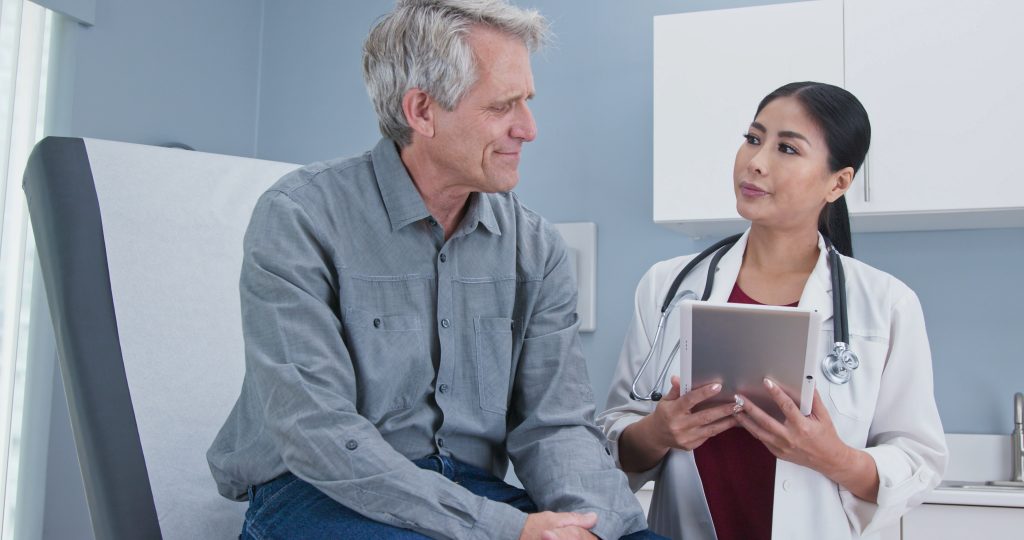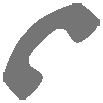
Continuous Positive Airway Pressure has long been the effective first choice for sleep apnea treatment, but unfortunately, it isn’t always popular. Studies show that many people struggle with CPAP compliance, with up to half of new CPAP owners quitting within the first year.
With nearly a billion cases worldwide, accessible, user-friendly Obstructive Sleep Apnea treatments have never been more important. One innovative treatment, Expiratory Positive Airway Pressure (EPAP), has recently begun making waves.
So, what is EPAP, and what do you need to know when deciding between EPAP versus CPAP? Let’s talk about it!
What Is EPAP?
Expiratory Positive Airway Pressure (EPAP) is a treatment method for snoring and Obstructive Sleep Apnea. It involves trapping some of the air exhaled by your lungs to create a pocket of pressurized air that keeps your airway open between each breath.
EPAP devices are often described as an alternative to CPAP therapy because they both use air pressure to prevent airway blockages caused by the tongue, soft palate, tonsils, and other surrounding soft tissues.
The EPAP process tends to produce lower amounts of air pressure compared to the maximum capabilities of a CPAP machine, which is why it is usually only prescribed in cases of snoring or mild to moderate OSA.
Does EPAP Treat Sleep Apnea?
Clinical data suggests that using expiratory positive airway pressure to treat mild to moderate Obstructive Sleep Apnea is highly effective. A 2011 study showed that nasal EPAP significantly improved sleep apnea management in people with mild and moderate cases, including:
- Lower AHI Scores
- Reduced Daytime Sleepiness
- Impressive Therapy Compliance Rates
How Does EPAP Work?
An EPAP device prevents airway obstructions. It works by partially blocking the release of air when you exhale. When that air is held back it becomes pressurized and acts as a brace for the soft structures in your nasal cavity, mouth, throat, and airway, making it easier to breathe.
EPAP Prevents the Release of Air During Exhalation
When using an EPAP device, you are able to inhale normally. However, when you exhale, part of the air that flows out of your body is held back, which increases the air pressure in your upper airways, also known as expiratory positive airway pressure. This process is made possible by a small, one-way valve that allows air to flow in while preventing it from flowing out.
Exhalation Vents Prevent EPAP Discomfort
EPAP devices also feature tiny vents that release small amounts of excess air when needed. This design prevents the air pressure build-up from becoming too high. It also reduces Positive Airway Pressure discomfort and makes it much easier to maintain a steady breathing pattern.
EPAP Works Best With Nasal Breathing
Expiratory pressure can be created while breathing through your mouth. However, virtually all currently available EPAP devices are designed for nasal breathing. This is because nasal expiratory positive airway pressure is easier to create and is believed to be more effective.
Products that utilize this specific method of PAP therapy are called Nasal EPAP devices. These tend to look and feel similar to a CPAP nasal pillow mask and usually feature nasal pillows or prongs that insert directly into the nostrils.
What Are the Criteria for EPAP Therapy?
If you are considering trying EPAP therapy, it’s important to keep in mind that it is not suitable for everyone. Before making any decisions, you need to discuss your health history and treatment requirements with your doctor. Most healthcare providers will require you to meet the following criteria to be considered eligible for an EPAP device.
- Have a diagnosis of mild or moderate OSA.
- Have an AHI score of no more than 30 without sleep apnea treatment.
- Do not require high-pressure PAP therapy.
- Be a nose breather.
- Keep your mouth closed while you sleep.
There are also instances where an EPAP device may be combined with other forms of sleep apnea treatment, such as Positional Therapy or Oral Appliance Therapy.
Which EPAP Device Is Best?
The FDA has approved multiple EPAP devices that treat snoring and OSA, most of which are available with a prescription and range from $100 to $300 per year. One popular option is the Bongo RX, which is primarily used for treating mild OSA and occasionally snoring.
When choosing an EPAP device, keep in mind that studies suggest that the ULTepap creates higher EPAP pressures than Bongo RX and could be a more suitable CPAP alternative in cases of moderate sleep apnea. On the other hand, if you’re looking for an easy way to treat snoring, you may want to check out the Optipillow, available without a prescription.
Are EPAP Devices Easy to Use?
EPAP is one of the most user-friendly options for treating sleep apnea. One of the biggest selling points of EPAP therapy is that the device is pretty minimalistic. This design makes it possible to enjoy the benefits of sleep apnea treatment without the bulky machinery and hoses.
In fact, these devices don’t even require a power source because they use valves to create air pressure rather than a machine. Choosing the correct nasal pillow size can take some trial and error, but once you have that figured out, simply insert it into your nostrils, and it’s ready to work!
CPAP Versus EPAP
EPAP and CPAP fall under the category of Non-Invasive Positive Airway Pressure therapy, which uses positive pressure air to keep the airway open during sleep. The biggest difference between CPAP versus EPAP is how each device creates and delivers this pressurized air.
CPAP machines create pressurized room air and continuously deliver it into the airway during inhalation and exhalation. Meanwhile, an EPAP device temporarily traps the air you exhale, creating a pocket of pressurized air that holds the airway open while you inhale.
What Are the Benefits of Choosing CPAP Instead of EPAP?
EPAP can effectively treat sleep apnea in the right conditions, but it doesn’t work for everyone. CPAP machines have been proven to effectively treat all different types and severities of sleep apnea and can be used by people who breathe through their mouths.
- High-Pressure Settings: Unlike a CPAP machine that can create a wide range of pressure settings, studies show that today’s EPAP devices cannot generate high air pressure levels.
- Treats Severe Sleep Apnea: People with severe sleep apnea usually require high-pressure CPAP therapy, which means EPAP is not a good option if you have severe sleep apnea.
- Treats Central Sleep Apnea: EPAP is designed to treat Obstructive Sleep Apnea only and should not be used to manage Central Sleep Apnea. CPAP treats all types of sleep apnea.
- Works for Mouth Breathing: EPAP does not work for people who breathe through their mouth at night and should not be used if you have a deviated septum or chronic nasal congestion. These people can, however, use CPAP with a full face mask.
- Getting Sick: If you get sick with a cold or flu, you may be unable to use your EPAP for a few days. With CPAP, you have the option to switch to a full face mask temporarily.
- Better Treatment Support: Compared to CPAP therapy, EPAP devices are less common, so finding a support network of professionals and peers familiar with troubleshooting EPAP therapy may be challenging.
- Insurance Coverage: While the science behind EPAP therapy looks promising, your insurance company may prefer you to stick with tried and true CPAP therapy.
What Are the Benefits of Choosing EPAP Instead of CPAP?
Despite their long history and supporting science, CPAP treatments have a lot of drawbacks. Your doctor is more likely to suggest trying EPAP if you have struggled with CPAP therapy in the past because EPAP devices are generally a lot easier to use and are more comfortable.
- Fewer Side Effects: CPAP therapy comes with many unpleasant side effects, including dry mouth, nose sores, and skin irritation. EPAP is more minimalistic and has far fewer side effects.
- No Power Supply Needed: If you’re camping or your power goes out, and you don’t have a backup battery, you’re usually out of luck with CPAP therapy. One of the greatest benefits of EPAP is that it doesn’t require any power sources.
- Increased Comfort: Because EPAP does not push a stream of air in
- to your airway, it’s usually more comfortable than CPAP and doesn’t require bulky headgear to hold your device in place.
- Less Equipment: Using an EPAP device is kind of like wearing a nasal pillow CPAP mask without the extra equipment, meaning you don’t have to sleep with bulky masks, tangled hoses, or loud machines.
- Travel-Friendly: While you can purchase a portable travel CPAP machine, it still requires the mask and tubing. EPAP devices are small and lightweight, making them perfect for traveling!
- Lower Upfront Costs: Even with insurance, CPAP machines usually cost several hundred dollars, not including the supplies and accessories. Meanwhile, you can purchase the Bongo RX annual supply kit for just $300.
- Easier to Clean: An EPAP device needs to be cleaned after each use. But compared to keeping up with CPAP machines, hoses, humidifiers, and masks, cleaning an EPAP is much easier!
- Increased Compliance Rates: Many people struggle to regularly use their CPAP machine because of the uncomfortable side effects. However, EPAP seems to be easier to tolerate, leading people to use their EPAP device on a regular basis.
Frequently Asked Questions
What Are the Best Alternatives to CPAP Therapy?
Other alternatives to CPAP therapy include lifestyle changes, Positional Therapy, Oral Appliance Therapy, sleep apnea exercises, and surgery.
Does EPAP Work for Mouth Breathers?
All of the EPAP devices that are on the market today utilize nasal EPAP, meaning they are intended for nose breathers only. If you have a deviated septum, chronic congestion, or some other issue that prevents you from being able to breathe through your nose, you should not use a nasal EPAP.
What Is the Difference Between EPAP and IPAP?
EPAP refers to the amount of air pressure applied to the airway during exhalation, while IPAP refers to the air pressure sent to the airway during inhalation.
Does EPAP Require a Prescription?
The majority of effective EPAP devices are only available with a prescription. If you are looking for an EPAP device that manages mild to moderate Obstructive Sleep Apnea, you will need a prescription. Devices that solely address snoring are usually available without a prescription.
Final Thoughts
CPAP therapy has long been considered the primary treatment for sleep apnea. However, it has its downsides, and many sleep apnea experts believe EPAP therapy is a promising alternative to CPAP under the right conditions.
Still, it’s important to remember that treating sleep apnea with EPAP alone is only an option for a very select group of people. When comparing CPAP versus EPAP, EPAP may be more comfortable and easier to use, but CPAP does a better job of treating severe sleep apnea and Central Sleep Apnea.
You should always speak with your doctor before changing your sleep apnea treatment plan. So, if you have mild or moderate Obstructive Sleep Apnea and want to know more about switching from CPAP therapy, talk to your doctor about trying EPAP!



